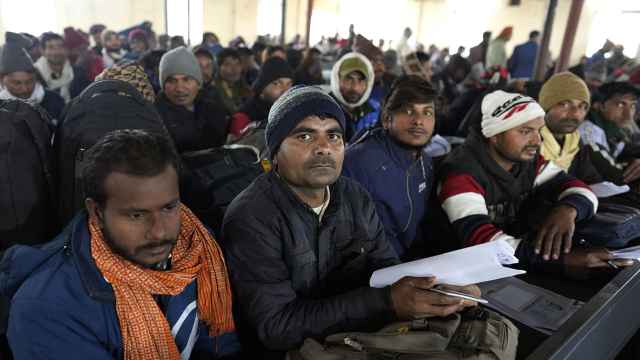Is it time to redefine emerging markets? For the world’s largest economies, the answer is a straightforward “yes.” But for the 190-plus poorer ones the answer is probably “no.”
Nine years ago, I had the good fortune of thinking up the acronym BRIC, which has become synonymous with the rise of Brazil, Russia, India and China and their influence on the world economy. Additionally, we published an outlook to 2050 that suggested these four economies could collectively be bigger than the Group of Seven economies, which, along with the United States, would make up the five biggest economies in the world based on the likely dollar value of their gross domestic products.
It’s also more than five years since we first introduced another acronym, the “Next 11,” or N11. That phrase described the 11 largest countries by population and what their BRIC potential might be.
I believe that most of the momentum behind the world economy is driven by these 15 countries. Therefore to describe these countries as “emerging markets” seems not only inappropriate, but insulting.
China last year overtook Japan as the second largest economy in the world, about $5.5 trillion in size. China is about the same size as the other three BRIC countries combined. In 2010, the BRICs grew on average by about 8.5 percent. Can you imagine what we would be thinking if the United States had grown by 8.5 percent? In 2009, the worst world economic performance in decades, the BRIC countries grew by about 5.5 percent.
Looking at domestic demand in the BRIC countries, the growth rate is more impressive. In 2010, they grew by close to 10 percent, and in China’s case, consumers appear to be more important. The dollar value of BRIC consumers can be estimated conservatively at just over $4 trillion. The U.S. consumer is worth $10.5 trillion — more than double the BRIC consumer, but BRIC consumers are growing at an annual rate of about $600 billion. If this pace is maintained, their consumers will be worth more than the U.S. consumer by the end of the decade. How can we call them “emerging markets”?
At some stage in this decade, the four BRIC economies will become as big as the United States, with China reaching about two-thirds the size of the U.S. economy. The four will be responsible for at least half of the real GDP growth in the world and as much as 70 percent.
Other possibly significant contributors to global GDP in the next decade include Korea, Mexico and Turkey. Only the United States is guaranteed from within the so-called developed world. The top 20 could also include Iran, Nigeria, Indonesia, the Philippines and Vietnam.
How should we then think about the phrase “emerging markets”?
Recently my colleagues and I decided to pursue the phrase “growth economies” more scientifically. At Goldman Sachs, we adopted this phrase in 2010 to describe how we treated the world’s most dynamic economies. A growth economy is one that is likely to see rising productivity and, combined with favorable demographics, likely to grow at a faster rate than the world’s average.
If this were the only necessary condition, it would include many countries beyond BRIC and N11. But it also needs to be an economy that has size and depth to allow investors sufficient scale and liquidity not only to invest, but also to exit when appropriate.
We then studied closely the size of some BRIC and N11 economies, their likely future growth rates and their productivity attributes. We decided we would need to make an arbitrary decision, so we opted for the following definition for growth economy: any economy outside the so-called developed world that’s at least 1 percent of current global GDP. At its current size of about $600 billion, it should be large enough to allow investors to operate along the same principles as in the more advanced economies, yet are likely to grow more. All others we would still define as emerging markets.
Under this definition, eight countries satisfy our criteria: the four BRICs, South Korea, Indonesia, Mexico and Turkey.
We also wanted to see how the list might be expanded to include countries we forecast might account for at least 1 percent of global GDP in the next 20 years. These include Saudi Arabia, Iran, Nigeria and the Philippines.
Investors need to benchmark their investing portfolios more appropriately. In the past, it became conventional for equity investors to base their investing around neutral benchmarks determined by the market capitalization of companies and indices. But this gives more weight to the U.S. economy and its companies and less to emerging markets than GDP would. An alternative approach is to use a current GDP-weighted benchmark — and for a few, bold investors, a future predicted GDP-weighted benchmark. This would give more weight to emerging markets and to growth economies.
When this approach was studied in detail, however, we thought it might overcorrect. So we decided to incorporate this aspect into our research. As a result, “neutral” investors will need to invest more in the emerging world, but not dangerously so.
The index that Goldman Sachs calculates every year for about 180 countries is called a Growth Environment Score, or GES, and is used to monitor productivity and likely sustainable growth. The index level goes from zero up to 10, with 13 subindexes for overall growth and productivity. South Korea’s GES score at 7.5 is higher than the United States at 6.9. For countries that have low GES scores, it’s appropriate to treat them as emerging markets with lots of risk. While they may grow significantly, it also keeps them somewhat vulnerable to adverse developments at the core of developed markets and their financial markets, especially the United States.
Countries with low GES scores need to undertake policies that will allow them to rise. Nigeria is an interesting case because within the next 20 years it could become as big as 1 percent of global GDP. Its GES score of 3.9 is below the average of the BRIC and N11 countries, and so needs to rise. At the same time, however, it has nearly doubled over the last 13 years, and if it maintains this progress it will before 2030 no longer be an emerging economy. As Nigeria accounts for about 20 percent of Africa’s population, that could be an exciting development.
Jim O’Neill is head of global economic research and commodities and strategy research at Goldman Sachs. A full version of this comment will be published in the spring 2011 issue of Europe’s World.
A Message from The Moscow Times:
Dear readers,
We are facing unprecedented challenges. Russia's Prosecutor General's Office has designated The Moscow Times as an "undesirable" organization, criminalizing our work and putting our staff at risk of prosecution. This follows our earlier unjust labeling as a "foreign agent."
These actions are direct attempts to silence independent journalism in Russia. The authorities claim our work "discredits the decisions of the Russian leadership." We see things differently: we strive to provide accurate, unbiased reporting on Russia.
We, the journalists of The Moscow Times, refuse to be silenced. But to continue our work, we need your help.
Your support, no matter how small, makes a world of difference. If you can, please support us monthly starting from just $2. It's quick to set up, and every contribution makes a significant impact.
By supporting The Moscow Times, you're defending open, independent journalism in the face of repression. Thank you for standing with us.
Remind me later.





